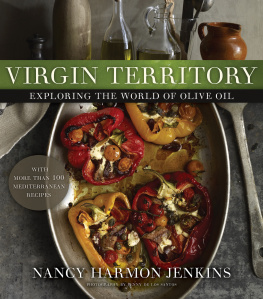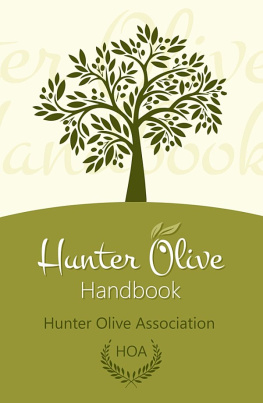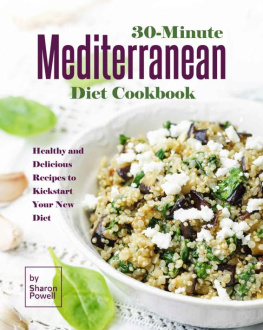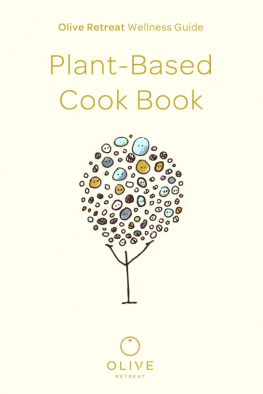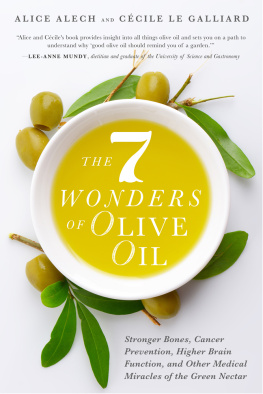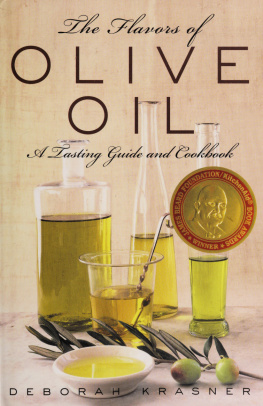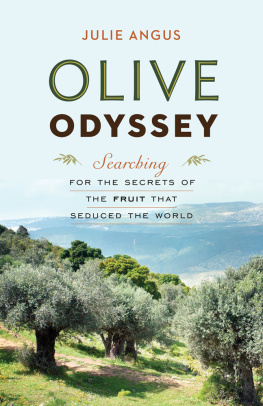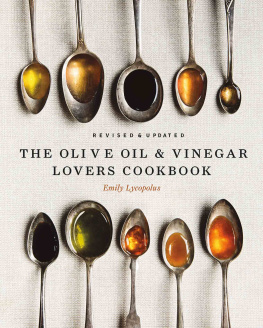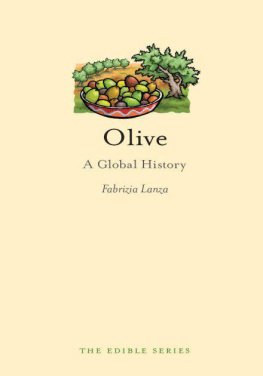For information about permission to reproduce selections from this book, write to Permissions, Houghton Mifflin Harcourt Publishing Company, 215 Park Avenue South, New York, New York 10003.
ACKNOWLEDGMENTS
A NOTE OF THANKS
First of all, I want to thank my children, Sara and Nicholas, along with their partners and offspring, for the love and support they have shown throughout this long enterprise; also heartfelt thanks to all the many hands who have joined us over the years as we harvested the olives, made the oil, and then sat around the table in the Teverina farmhouse kitchen to sample, taste and discuss, analyze the past, and make plans for the future.
To Penny De Los Santos for fabulous photography and great companionship on our olive oil adventures; to Justin Schwartz, Stephanie Fletcher, and the team at Houghton Mifflin Harcourt; to Jennifer Griffin, who had faith in the book when I had lost it. To all of you, I pledge my thanks and a bottle of great olive oil next time we harvest!
Thanks are also surely due to the vast number of farmers and producers of excellent olive oil right around the Mediterranean and on to California and Chile who have been generous of their time and expertise, including especially:
- In Greece: George and Christine Demetriadis of Biolea; Aris Kefalogiannis of Gaea and the Kritsa Cooperative
- In France: Mort Rosenblum and Jeannette Hermann of Wild Olives/Huile dOlives in Draguignan; Jean-Benot and Cathrine Hugues of Castelas, Valle des Baux
- In Spain: Francisco (Paco) Va and his sister Rosa Va of Castillo de Canena; Francisco Nuez de Prado of Baena; John Cancilla and Fadrique Alvarez de Toledo of Marques de Valdueza
- In Tunisia: Abdelmajid Mahjoub of Les Moulins Mahjoub
- In Palestine: Nasser Abu Farha of Canaan Fair Trade and the Palestine Fair Trade Organization
- In Croatia: Katia Gasparini of AgroLaguna, Pore
- In Sicily: Mary and Tonino Simeti of Bosco Falconeria, Partinico; Gianfranco Becchina and his daughter Gabriella of Olio Verde, Castelvetrano; the family of Nicola Titone at Azienda Titone, Marsala; Lorenzo Piccione of Pianogrillo, Chiaramonte Gulfi
- In Puglia: Catherine and Brian Faris of Pascarosa in Martina Franca; Armando Balestrazzi of Il Frantoio in Ostuni
- In Umbria: Graziano Decimi of Decimi oils; Feliciano Fancelli of Frantoio Fancelli
- In Molise: Marina Colonna of Azienda Colonna, San Martino in Pensilis; Enrico Colavita of Oleificio Colavita, Campobasso
- In Lazio: Paola di Mauro of Colle Picchione in Marino
- In Tuscany: the Stucchi-Prinetti family of Badia a Coltibuono; the Bicocchi family of Tenuta Numero Uno; Gemma Pasquali and her father, Paolo, at Villa Campestri; Helen and Keith Richmond of Podere Boggioli
- In the Veneto: Mirko Sella of San Cassiano
- In California: Mike Forbes and Bob Singletary of California Olive Ranch, Oroville; the Yocha Dehe Wintun Nation of Seka Hills, Capay Valley
- In Chile: Jay Rosengarten and Tomas Garcia of Olisur, Colchagua Valley
Other help, both general and specific, was offered by the following friends, scientists, sages, chefs, and experts, and I thank them all, with the assurance that any errors of fact or interpretation in the book are mine and mine alone: the late Mita Antolini, Arnaldo Antolini, Burton and Nancy Anderson, Nancy Ashe, Eryn Balch, Rolando Beramendi, Caroline Beck, Mario Bertuccioli, Bill Briwa, Chris Butler, Maurizio Castelli, Darrell Corti, Maria Isabel Covas, Barbara dAgapiti, Salvatore Denaro, Lou di Palo, Carrie Donavan, Greg Drescher, Beth Elon, the late Dun Gifford, Dan Flynn, Don Harris, Roberta Klugman, Alessandro Leone and Antonia Tamburrino, Fausto and Mar Luchetti, Luanne OLaughlin, Claudio Peri, Mara Jos San Romn, Lisa Sasson, Rossella Speranza, Antonia Trichopoulou, Beatrice Ughi, Paul Vossen, and Ari Weinzweig.
Olives
Sometimes a craving comes for salt, not sweet,
For fruits that you can eat
Only if pickled in a vat of tears
A rich and dark and indehiscent meat
Clinging tightly to the piton spears
Of toothpicks, maybe, drowned beneath a tide
Of vodka and vermouth,
Rocking at the bottom of a wide,
Shallow, long-stemmed glass, and gentrified;
Or rustic, on a plate cracked like a tooth
A miscellany of the humble hues
Eponymously drab
Brown greens and purple browns, the blacks and blues
That chart the slow chromatics of a bruise
Washed down with swigs of barrel wine that stab
The palate with pine-sharpness. They recall
The harvest and its toil,
The nets spread under silver trees that foil
The blue glass of the heavens in the fall
Daylight packed in treasuries of oil,
Paradigmatic summers that decline
Like singular archaic nouns, the troops
Of hours in retreat. These fruits are mine
Small bitter drupes
Full of the golden past and cured in brine.
A. E. Stallings
The New Criterion, June 2006
Introduction
I fell in love with olive oil almost by accident, but I fell hard. Forty years ago, I bought an abandoned farm, 25 acres high up in the hills of eastern Tuscany, hard by the border with Umbria. A dozen or so olive trees came with the property, all of them overgrown and neglected, scarcely discernible amid the tangle of blackberries and wild gorse that infested the terraces below the tumbledown stone farmhouse. Over the years, those olive trees began to fascinate me, even as they led me to wonder: Who planted them? When? And why? Twelve olive trees would not provide enough oil for an individual, let alone the fairly sizable family that had last inhabited and farmed Pian dArcello some eight or ten years earlier. And those decrepit trees scarcely bore any fruit at all.
Virgin Territory is in part the story of that fascination and of how it led me on an unending and predictably futile search to find the worlds greatest olive oil, a search that led to agronomists and nutritionists, to great research institutions, to small family farms in out-of-the-way corners of the Mediterranean and to vast estates where olives marched in regimented rows to the horizon, and finally back to our own farm, where I eventually added 150 young trees to the collection and where we now make our own superb (if I say so myself) green-gold, Tuscan extra-virgin. It has been a continuing process of education as I have studied and questioned, and as I began to grasp how and why things were done the way they wereand just as important, how and why things began to change.

